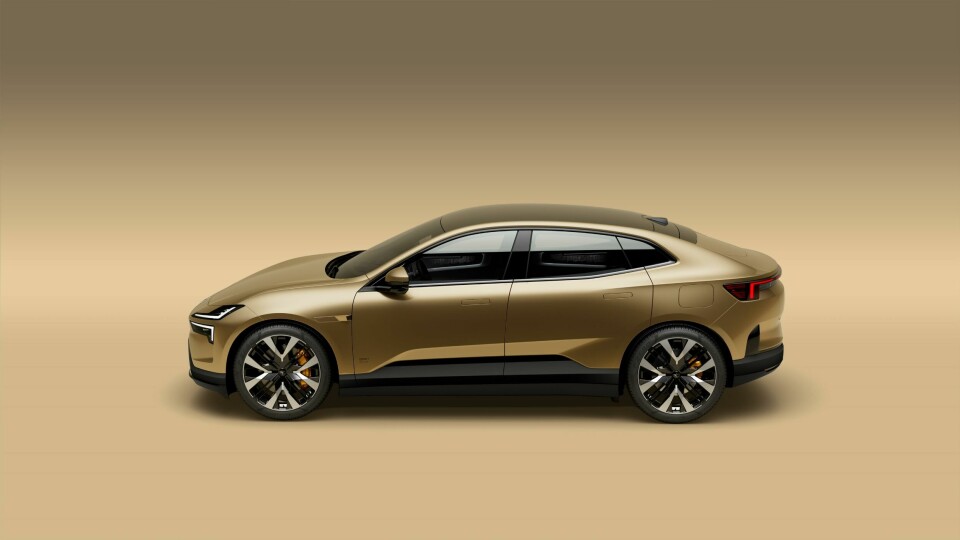
Polestar 4 debuts in Shanghai
Sleek SUV coupe built on Geely architecture ditches rear window, takes cues from Precept concept
Standing on a stage amidst thousands of red tulips, Polestar CEO Thomas Ingenlath unveiled the brand’s newest vehicle at Auto Shanghai, the biennial show that is Asia’s — and arguably one of the world’s — most important motor shows.
The Polestar 4 is an SUV coupe built on Geely’s Sustainable Experience Architecture (SEA), enabling a nearly three-metre wheelbase and a super fast silhouette. “Rather than simply modifying an existing SUV, giving it a faster roofline and as a result, compromising elements like rear headroom and comfort, we have designed Polestar 4 from the ground up as a new breed of SUV coupe that celebrates rear occupant comfort and experience,” Ingenlath said.
With such a small lineup, Polestar has been deliberate and strategic with each model it brings to the market. “With that car there was a very clear brief, and the idea to differentiate it quite clearly from the 3 was very important from the start,” head of design Maximilian Missoni told us. “The cars are supposed to live in different segments and deliver different things, and we didn’t want to just re-size the same design. We went with this different architecture, which allowed us to get this amazing interior space with an extremely sleek silhouette.”
Efficiency is, of course, a key element of the Polestar ethos. Where the Polestar 3 keeps a more traditional, upright SUV silhouette and then looks to aerodynamic enhancements like the front wing and rear spoiler to reduce drag, the Polestar 4 is more organically aerodynamic with its low nose, sharply raked windscreen and fast-dropping roof. Notably, the Polestar 4 lacks a rear window, a cue taken from the Precept concept, and instead uses a roof-mounted rear camera and digital rearview mirror. But this isn’t a case of technology for technology’s sake; moving the roof structure rearward increases efficiency and opens up interior space, making way for an expansive glass roof that extends behind the rear passengers.
“The lack of a rear window has unlocked so many things in the interior,” Missoni says. “It starts with the longer glass roof, which gives you indirect lighting behind the occupants’ heads, so you have this feeling of being cradled in the interior from the back.” Sunny-climate dwellers will be pleased to know the roof also comes with an optional electrochromic functionality.
“The lack of a rear window has unlocked so many things in the interior,” Missoni says. “It starts with the longer glass roof, which gives you indirect lighting behind the occupants’ heads, so you have this feeling of being cradled in the interior from the back.”
The instrument panel design uses a landscape-oriented centre display atop a central horizontal air vent and floating centre console — a design, to our eye, that fits better to the car’s proportions and appears more integrated than the vertical tablet found in the Polestar 2, 3, and Precept. “There are pros and cons for both orientations, and I wouldn’t say one is better than the other because they serve different purposes,” Missoni says.
As with other Polestar models, interior materials draw inspiration from fashion and sportswear. “The 3D-knitted textile version is definitely the most striking one,” Missoni notes. In line with the brand’s commitment to sustainability, materials are made from recycled PET and polyester, while Nappa leather options are animal-welfare certified.
Underneath, the Polestar 4 will be powered by one or two motors, with the dual-motor version producing 400 kW (544 hp) and a 0-100 kph time of 3.8 seconds, making it the fastest Polestar production car to date. Both powertrain options can be fitted with a 102 kWh battery, and Polestar says the long-range, single-motor variant has a preliminary range target of more than 300 miles. All Polestar 4 models will be built at the Geely-owned plant in Hangzhou Bay, China, with a target of arriving in the North American market in late 2024 at a starting price of $60,000 USD.
























